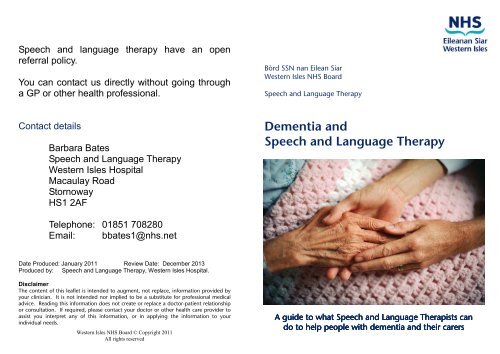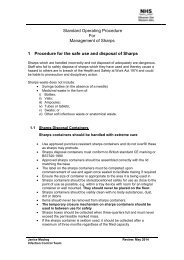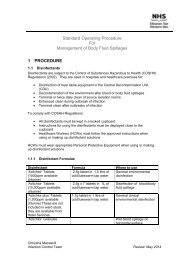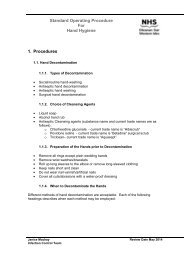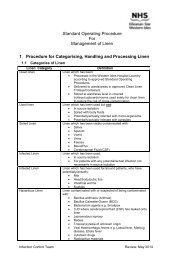Dementia and Speech and Language Therapy Leaflet
Dementia and Speech and Language Therapy Leaflet
Dementia and Speech and Language Therapy Leaflet
You also want an ePaper? Increase the reach of your titles
YUMPU automatically turns print PDFs into web optimized ePapers that Google loves.
Assessment<strong>Speech</strong> <strong>and</strong> <strong>Language</strong> Assessments can tell usabout things which work well <strong>and</strong> things whichdon’t work so well when our client is communicating.Based on this information a therapist can giveadvice to the client <strong>and</strong>/or carer about strategies touse.The types of assessments carried out may include:• Underst<strong>and</strong>ing of spoken words• Underst<strong>and</strong>ing of grammar• Thinking of words• Describing a picture• Story RetellingLook through old photographs, postcards, tickets<strong>and</strong> other reminders to the past to choose whatshould go in the book.Agree on a suitable label for each item.You might include things about parents, childhood,school, work, relationships, children, friends,homes, hobbies <strong>and</strong> holidays.Put in reminders about things that you feel stronglyabout – anything from food <strong>and</strong> drink to music,sport or politics.These assessments will provide information aboutvarious aspects of communication including howmuch information the client is able to process atonce, ability to link words to meaning, short termmemory, ability to interpret visual material <strong>and</strong>whether ability to recall is helped by context.
The therapist may suggest:• Strategies to help with word-finding,• Working with the client to produce a life-storybook.• Ways to maintain participation in currentactivities.As the condition progresses, treatment is morelikely to involve collaboration with carers, providingadvice to manage communication problems, <strong>and</strong>on the type of activities which might encouragecommunication.In the later stages the therapist may be able tosuggest activities which can generate a responsefrom clients who have become reluctant to engagein conversation.She may also become more involved in theassessment <strong>and</strong> management of swallowingdifficulties if these occur.<strong>Therapy</strong>Word FindingIn some type of dementia a degree of relearningof words where the meaning has beenlost is possible. In other types the rate of declinecan be slowed by appropriate activities.Memory compensationStrategies can be developed to help withmemory problems at home. It’s possible toprovide personalised word <strong>and</strong> picture bookswhich can be used as reminders of names orimportant words.Life History WorkSupport can be given for a client to work with afamily member or carer to produce a life historybook using photographs, mementos <strong>and</strong> simplewritten material. This can give a shared focusfor communication, <strong>and</strong> may spark off otheractivities such as listening to music or lookingthrough books together.
What is a life story book?A life story book is a collection of reminders ofimportant times in your life, such as photographs,tickets, postcards etc.It can be enjoyable to make, <strong>and</strong> gives anopportunity to talk about yourself <strong>and</strong> your life.You might enjoy looking through the book later,<strong>and</strong> want to share your memories with friends <strong>and</strong>familyHow do you make a life story book?You can use a scrapbook or photograph album tomake the book, or use a computer to scan <strong>and</strong>organise material.AdviceThe <strong>Speech</strong> <strong>and</strong> <strong>Language</strong> Therapist can provideadvice to both clients <strong>and</strong> carers. This mightinclude:• Information about the condition <strong>and</strong> itspossible effect on communicating.• Strategies to make communicating easier.• Ways to encourage communicating in thedaily routine.• Training for caregivers in communicating,feeding <strong>and</strong> swallowing.• Suggestions to help plan for the future.InterventionThe type of intervention which the therapistcan provide will change as the conditionprogresses.Initially work is more likely to be directly withthe client.


